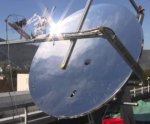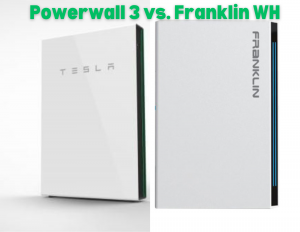Researchers are developing a PV system that concentrates solar radiation 2,000 times and converts 80 percent of the incoming radiation into useful energy.
Under development at IBM labs, the prototype High Concentration PhotoVoltaic Thermal (HCPVT) system uses a large mirrored parabolic dish attached to a tracking system to position the dish at an optimal angle to the sun.
The sun’s rays are reflected off the mirrors onto microchannel-liquid cooled receivers with triple junction photovoltaic chips; with each 1×1 centimetre chip able to generate 200-250 watt hours over an eight hour day in a sunny region.
More than 30 percent of collected solar radiation can be converted into electrical energy and the hundreds of chips in each unit collectively represent 25 kilowatts of electricity generation capacity.
The liquid cooling system, 10 times more effective than passive air cooling, keeps the chips at a safe temperatures up to a solar concentration of 5,000 times. The chips maintain almost the same temperature at a concentration of 2,000 times; the magnification being used for the system.
The researchers believe they can achieve a cost per aperture area below $250 per square meter, with a levelised cost of energy less than 10 cents per kilowatt hour.
The heated liquid presents another opportunity for energy harvesting in heat recovery, with the potential for approximately 50% of the waste heat being utilised.
The heated liquid can be used for desalination; yielding 30-40 litres of drinkable water per square meter of receiver area per day, while still generating electricity with a more than 25 percent yield. The HCPVT system could also provide air conditioning via a thermal driven absorption chiller.
A $2.4 million grant from the Swiss Commission for Technology and Innovation has been awarded to the researchers from IBM Research, Airlight Energy, ETH Zurich and Interstate University of Applied Sciences Buchs NTB to research and develop the system.
Source/image source.







































